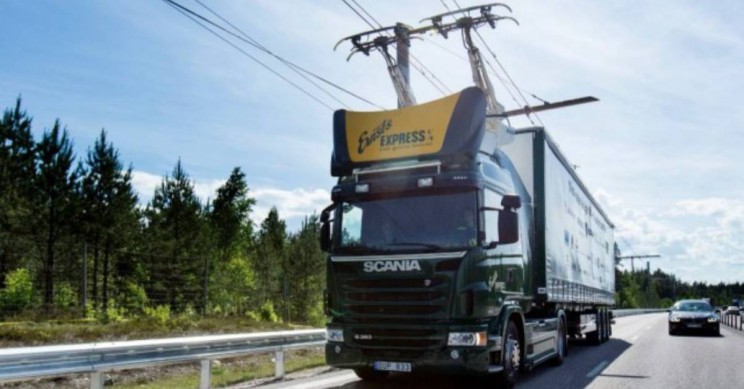Germany Open Its First eHighway System for Trucks

This week, Germany opened a new electrified eHighway for trucks developed by Siemens that they hope will help cut down on greenhouse gas emissions.
New Electrified eHighway Test Underway
On Tuesday of this week, Germany opened up a new stretch of electrified autobahn for diesel burning trucks in their ongoing efforts to eliminate greenhouse gas emissions. The new eHighway system comes in the form of cables suspended over the existing highway that specially-equipped trucks can use to draw power for an electric motor, similar to how trolleycars and electric trains operate.
Developed by the German industrial company, Siemens, the electrification system went into effect on 10 km (6.2 miles) of autobahn, allowing trucks with the necessary equipment mounted to their roof to use the electrified cables to travel at speeds up to 90 kph (56 mpm) without needing to burn any diesel fuel, converting back to diesel-powered internal combustion once they leave the electrified stretch.
Siemens says their system is ideal for areas where railways are not practical, but where there is existing road infrastructure that can be electrified using their system. The stretch of highway is part of an artery from the Frankfurt airport to a nearby industrial park which has a lot of diesel-powered truck traffic, so that even if the system doesn’t take off elsewhere, it could help reduce more carbon emissions than on your normal stretch of highway.
Siemens also emphasizes that truck operators can save €20,000 ($22,370) over 100,000 km (62,137 miles) on fuel costs using their system on top of the emissions reduction from electrifying freight vehicles.
Trucking demand is booming as the global economy continues to grow, threating to undue any progress made in addressing greenhouse gas emissions that are fueling climate change. Siemens and the German government hope that electrified highways will be one part of the overall solution to averting the worst effects of climate change going forward.
Source: Interesting Engineering
